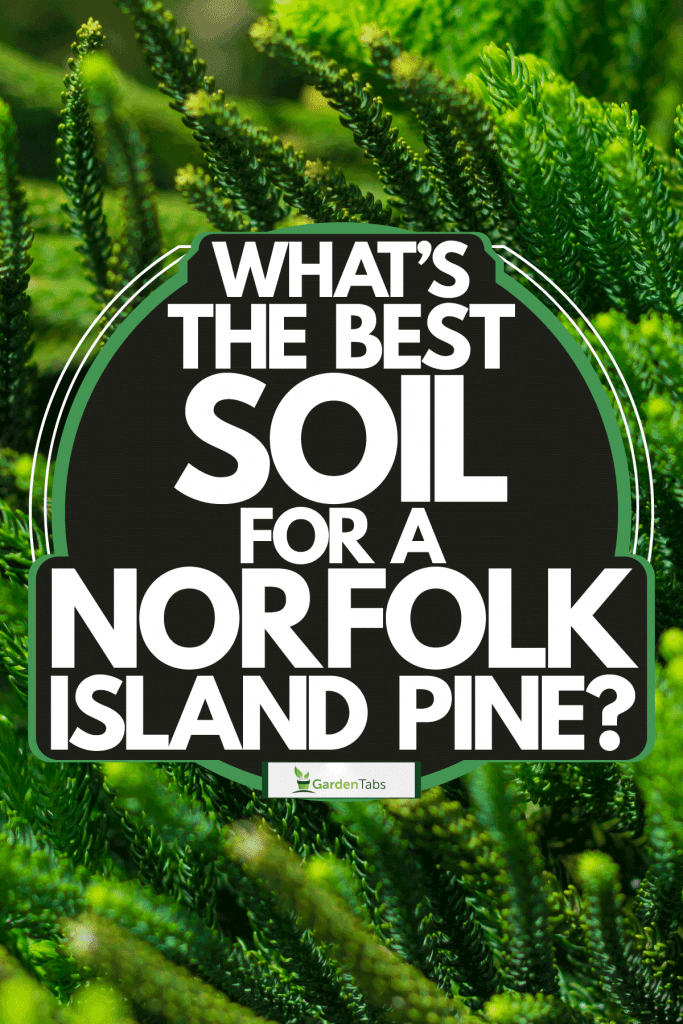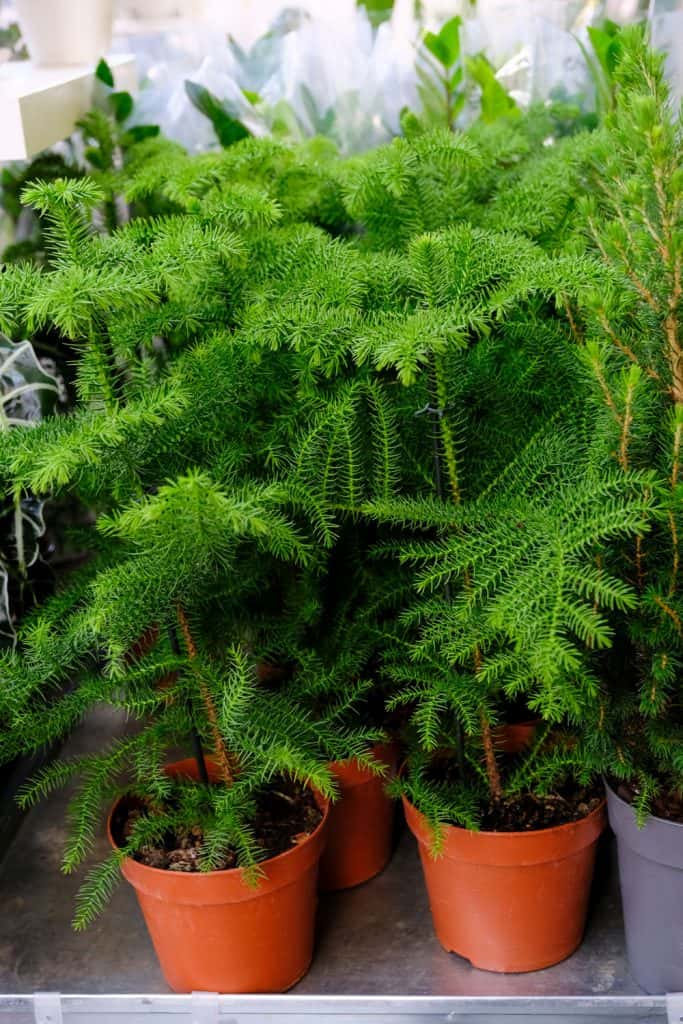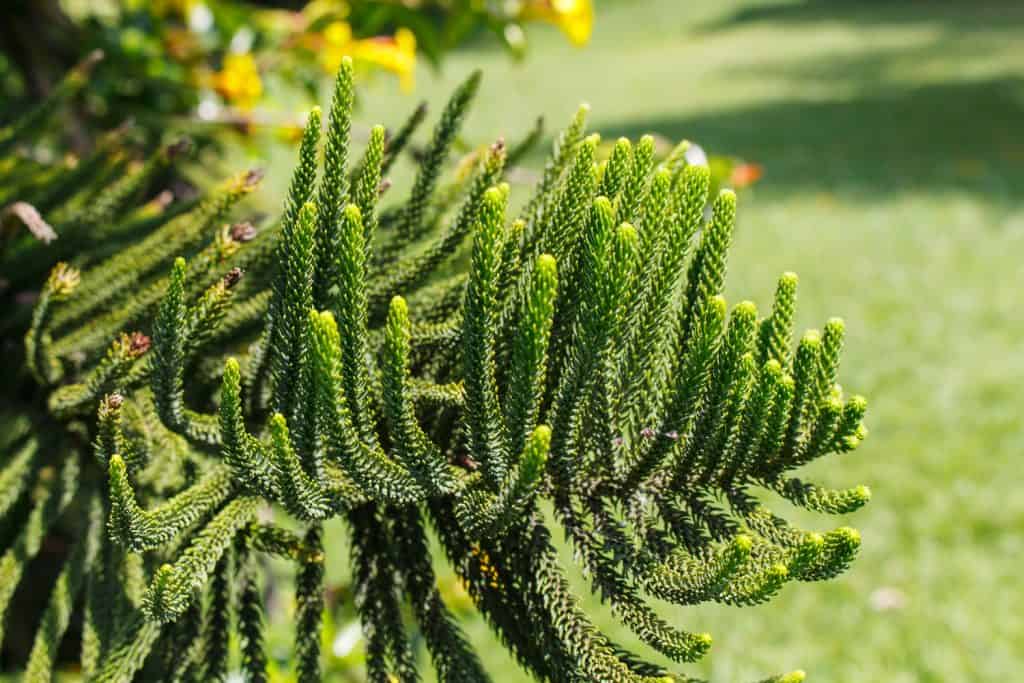Norfolk Island Pines are commonly seen around the holiday season and are used to decorate with. But the problem is that once the holidays are over, you still have a living tree that you may not know what you do with. The good news is that Norfolk Island Pines can be planted in either a pot or in the ground. But if that is your intention, what kind of soil is best? We’ve done the research in this article.
Norfolk Island Pines are warm-climate, coastal trees that can’t be grown outdoors in all areas. The best soil type depends on whether you are growing the tree in the ground or a pot. When planted in the ground, these trees can adapt to any type of well-draining soil. But when grown in a container, a mix of potting soil, sand, and peat is best.
How do you know whether to plant a Norfolk Island Pine in the ground or a container? Should you amend the soil in any way? What else should you know about growing these trees? Continue reading to learn all the information you’ll need.

What Kind Of Soil Do Norfolk Pines Like?
Norfolk Island Pines are native to Norfolk Island in Australia. Australia is well-known for its tropical and coastal climate, so you might assume that these trees love sandy soil. This is partially true because these trees can grow up to 200 feet tall in the sandy soil on Norfolk Island.
But, Norfolk Island Pines can also be grown in some of the warmer regions, where they can reach 100 feet. The soil in these areas isn’t always sandy, yet the Norfolk Island Pine trees can still thrive.

While Norfolk Pines do like sandy soil, you really can’t say that sandy soil is the best because they can grow very tall and live a long time in other types of soils as well. The best kind of soil for Norfolk Pines is well-draining soil.
The reason why well-draining soil is essential is that soils that aren’t well-draining can hold water like a bowl around the roots of a plant. For plants in general, but especially those with weak root systems like the Norfolk Pine has, this can cause root rot which will ultimately kill the plant.
Landscape Planting For Norfolk Island Pines
Sandy soil is the most well-draining soil type, which is why Norfolk Pines grown in this type of soil tend to grow taller and live longer. But, when planted in the ground in the correct zone, they can also adapt to other soil types as long as the soil is well-draining.
With that being said, it is not necessary to add sand to increase soil drainage. In the case of Norfolk Island Pines, adding sand or making any other type of amendments to the soil can interfere with the tree’s adaptation to the soil.
The reason why has to do with the shallow and weak root systems. Since most soil amendments happen near the soil's surface, they can interfere with root growth by limiting the ability of the roots to spread out. If your soil is already well-draining, it is best to leave it alone when planting a Norfolk Island Pine.
Container Planting For Norfolk Island Pines
Since these trees can’t grow in all areas, it is not uncommon for them to be grown exclusively in containers. The downside to this is that you will have to create the ideal soil to grow.
The soil in the container still needs to be well-draining, but it also needs to support the plant. This is because plants with weak and shallow root systems tend to lean when planted in containers.
If you don’t want to tie the plant to a stake to prevent leaning, you’ll have to create the correct type of well-draining but supportive soil. To do this, mix equal parts of sand, peat, and potting soil. This will make the optimal soil needed for your plant to thrive, with no other amendments required.
Does Norfolk Island Pine Like Acidic Soil?
In general, acidic soil is better for plants because it provides them with greater access to nutrients. This is especially important for plants such as the Norfolk Island Pine that have weak root systems. With that being said, although acidic soil is better for Norfolk Island Pines, they can grow just as well in slightly alkaline soil.
This is because the sandy soil they typically grow can be either acidic or alkaline, depending on how much rock and other particles the sand contains. So although acidic soil is better, Norfolk Island Pines don’t necessarily like it better than alkaline soil.
Can I Plant A Norfolk Island Pine In My Yard?

You can only plant a Norfolk Island Pine in your yard if you live in certain regions. Remember that these trees are native to Australia, which has a tropical climate that is warm for most of the year. You need to live in a similar environment for these trees to survive the winter.
In the United States, you can only plant a Norfolk Island Pine in your yard if you live in USDA Plant Hardiness Zones 10 and 11. In these zones, the lowest average winter temperature doesn’t get below 30 to 45 degrees Fahrenheit.
The only areas included in zones 10 and 11 are southern Florida, southern California, and the southernmost tip of Texas. If you live in any other area, there is a chance that the tree will get too cold during the winter, so you will need to plant it in a container if you want it to survive.
It’s also worth noting that although Norfolk Island Pines can survive in South Florida when planted in the ground, the area is also prone to hurricanes. Since these trees tend to have shallow root systems, they can easily get blown over and uprooted. If you live in South Florida, you may want to consider planting them in a pot as well.
See More: How Big Does A Norfolk Island Pine Get?
How Do You Plant A Norfolk Island Pine?
The right way to plant a Norfolk Island Pine depends on whether you are planting it in the ground or a container. If you’re planting it in the ground, you’ll want to plant it in an open location that isn’t too close to other plants. This is so the shallow roots can spread out further without the roots of another plant interfering.
You’ll also want to plant them in a bright and sunny location, but you don’t necessarily need an area that gets full sun as it can be too intense in already warm climates. A site that receives 3 to 6 hours of sun is best. Dig a hole as deep as the pot but twice as wide. Then place the tree in the hole and water it thoroughly.
When planting a Norfolk Island Pine in a container, choose a slightly deeper and wider pot than the existing pot. Make sure that the pot has drainage holes. Fill it with the sand/peat/potting soil mixture that was mentioned earlier.
After planting the tree in a container, you can leave it outside during warmer months in a location that receives 3 to 6 hours of sunlight. Before the temperature drops below 35 degrees, you’ll want to bring the container inside. Once inside, place it near a window where it can receive either bright direct or indirect sunlight.
How Often Should You Water A Norfolk Island Pine?
You should water a Norfolk Island Pine about once a week when grown outdoors. Water more often during periods of drought or little rainfall. When planted indoors, you will need to water it when the soil feels dry.
When watering a Norfolk Island Pine indoors, you will want to place a saucer underneath the pot for excess water to drain into. Empty the water once the pot has finished draining to prevent root rot.
Since these are tropical plants, they also need humidity. This is provided naturally outdoors, but you will need to provide it indoors, especially during winter. The best way to do this is to place a humidifier in the room with your tree or mist it once a week.
See More: Norfolk Island Pine Tree Care Guide
Are Coffee Grounds Good For Norfolk Pines?
Coffee grounds are good for lots of plants, including Norfolk Island Pines. Adding a cup of coffee grounds per week to the container of your Norfolk Pine can help make the soil more acidic.
In Closing
Norfolk Island Pines grow in sandy soil in their native habitat. But, they can adapt to live in any soil as long as it is well-draining. Well-draining soil is necessary to prevent root rot and help keep the weak and shallow roots in good shape. Thanks for reading!
